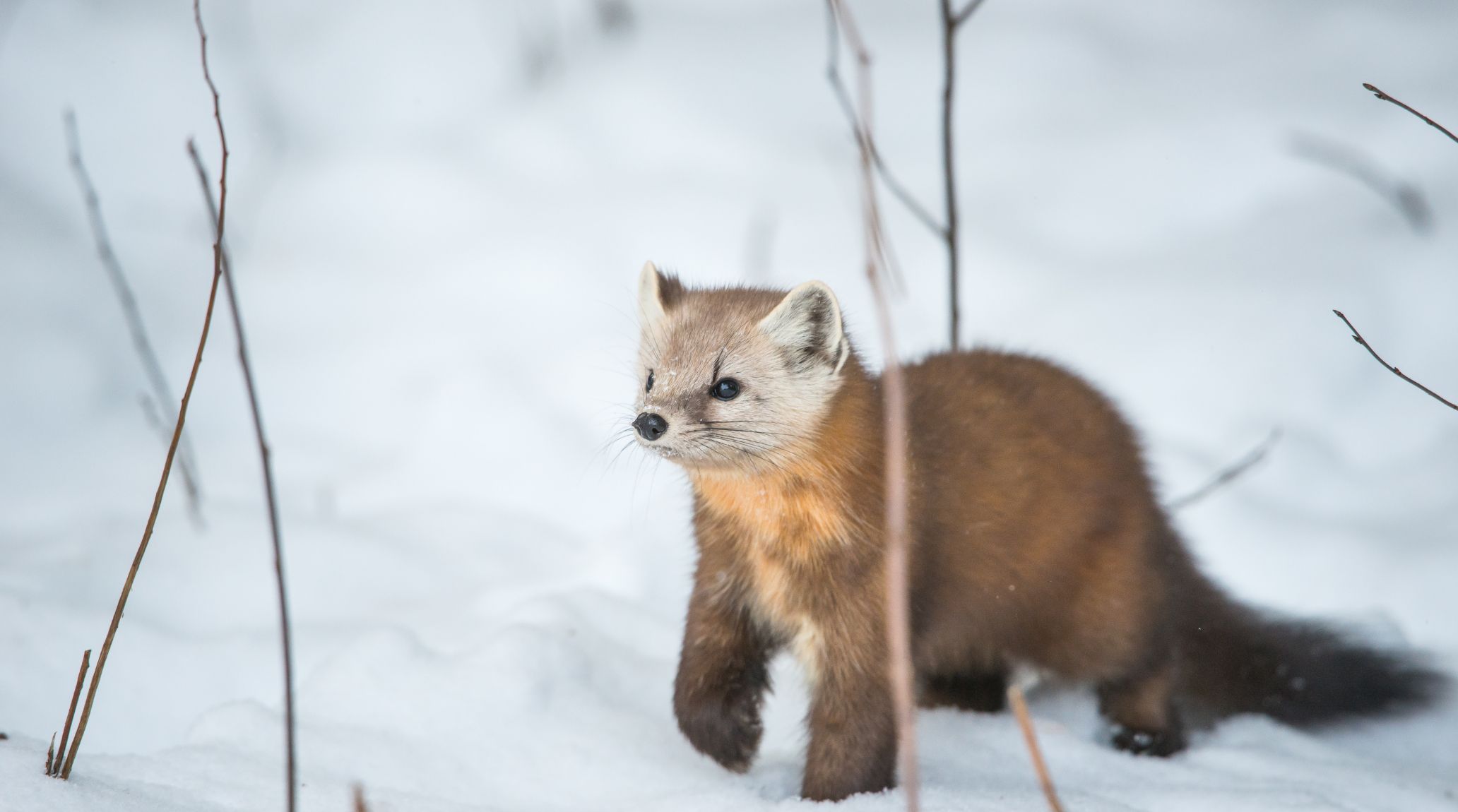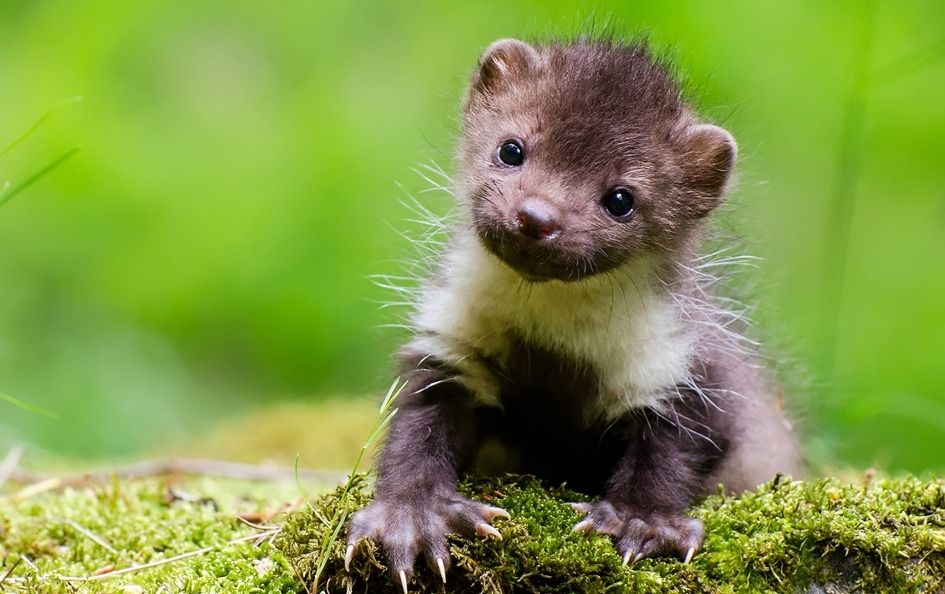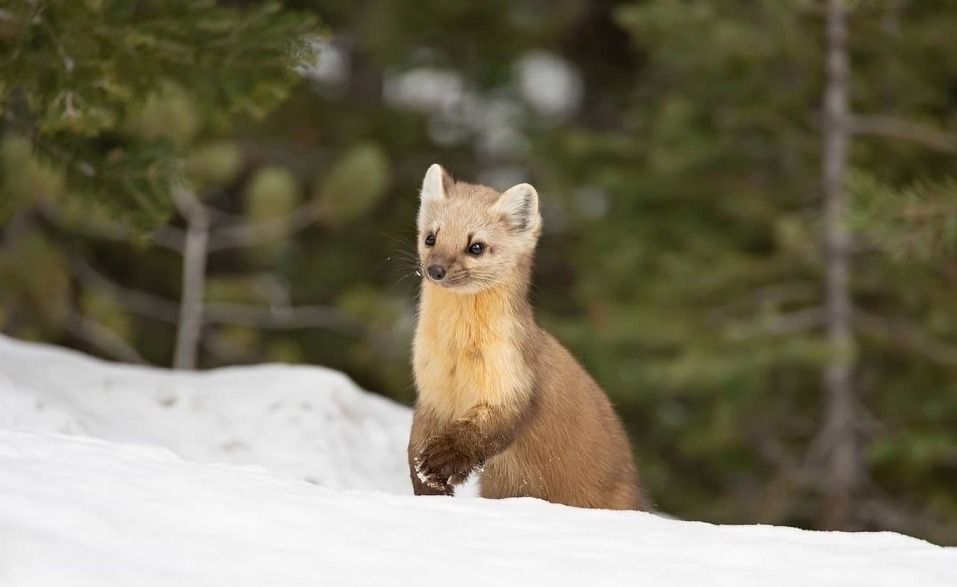
“
Nestled amidst the dense forests of Europe and parts of Asia, the pine marten (Martes martes) stands as a captivating creature of the wilderness. Known for its sleek fur, agile movements, and elusive nature, this member of the mustelid family has fascinated naturalists and wildlife enthusiasts alike. From its hunting prowess to its role in forest ecosystems, the pine marten embodies resilience and adaptation in the face of changing landscapes. Join us as we uncover 20 intriguing facts that unveil the secrets of the pine marten's life in the wild.1
1
”
Pine martens have a unique hunting technique. They often use a method called "scent-trailing," where they follow the scent of their prey through the undergrowth or snow to locate and capture it with precision.1
These solitary animals use scent glands to mark their territories, with males typically having larger ranges than females. They communicate through various vocalizations, such as chirps and chatters, which help them assert dominance and attract mates. 2
Pine martens possess sharp senses of smell and hearing, which are crucial for locating prey and detecting predators. Their keen eyesight also plays a role in hunting during dawn and dusk, the times when they are most active. 3
Their diet includes small mammals, birds, insects, fruits, and nuts, making them adaptable to seasonal food availability. They are known to raid bird nests for eggs and chicks, supplementing their diet with protein-rich meals. 4
Breeding occurs in mid-summer, with females giving birth to 1-5 kits in the spring of the following year. Kits are born blind and helpless, relying entirely on their mother for care and protection. 5

Kits are weaned at 8-10 weeks old and become independent within a few months. During this time, they learn essential hunting and survival skills from their mother. The transition to independence is an important phase in their development.
Pine martens have adapted to various forest types, including mixed and coniferous forests. Their fur changes with the seasons, becoming thicker and darker in winter to withstand colder temperatures. 6
Due to habitat loss and historical fur trading, pine martens have faced significant population declines. Conservation efforts have been crucial in reintroducing them to areas where they were once extirpated and protecting their habitats. 7
As both predator and prey, pine martens play a vital role in the ecosystem. They help control populations of small rodents and insects and contribute to seed dispersal by consuming fruits and nuts. 8

In winter, pine martens have specialized adaptations to deal with cold conditions. Their fur provides excellent insulation, and they often cache food in hidden spots under the snow to access during harsh weather.
The pregnancy period of pine martens lasts approximately 30-38 days, marking a crucial phase in their life cycle. After mating in mid-summer, females carefully prepare for the arrival of their offspring.9
A camera trap on Forestry Commission land in the North York Moors captured an image of a male pine marten, marking the first confirmed sighting in the area in 24 years and the first live one in 35 years. 10
During the breeding season and harsh weather, pine martens use dens in hollow trees or ground burrows for shelter and protection. These dens provide a safe space for raising young and avoiding predators. 11
Pine martens are generally shy around humans but have adapted to living close to some human settlements. They may scavenge near human dwellings if natural prey is scarce. Their adaptability to urban environments demonstrates their resilience.12
Pine martens may be aiding red squirrels' survival. Their return to Scotland seems to reduce invasive grey squirrel numbers, which are easier for pine martens to catch. This unexpected benefit could help red squirrels thrive.13
Pine martens are legally protected in many countries to prevent further population declines. Protection measures include conserving their habitats and regulating hunting and trapping activities.14
Pine martens prefer well-wooded areas with ample cover for dens, using tree hollows, abandoned animal homes, or purpose-built boxes. They can also adapt to more open habitats like rocky hillsides and scrubland if needed.15
Pine martens range from 19 to 27 inches in length, including their tail. They have a sleek, elongated body with a bushy tail, making them agile climbers. Their size helps them navigate dense forests and hunt for prey efficiently.16
In the wild, pine martens typically live 8-10 years, with females reaching reproductive maturity around one year of age. Their slow reproductive rate makes conservation efforts vital for population stability.17
Despite challenges from habitat fragmentation and climate change, pine martens exhibit resilience. They adapt to varying environmental conditions and human impacts on their habitats. Their adaptability is a testament to their survival skills.18


